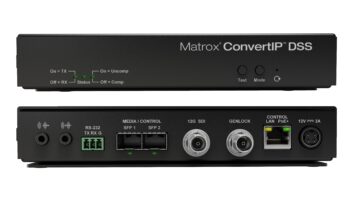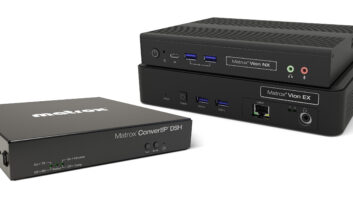In today’s broadcasting and sports production landscape, IP can serve as a Swiss Army Knife for live video, enabling flexibility and scalability that were unimaginable just a few years ago. However, that same flexibility can lead to complexity, especially when multiple protocols and formats are involved. In taking full advantage of IP-based workflows for live video delivery, the real challenge lies in managing this complexity efficiently.

A comprehensive live IP video delivery platform with robust tools for managing video workflows, protocols, and formats enables broadcasters to deliver the right content to the right destination in the right format. No matter where the video is going or how it’s being delivered, a reliable, automated system can provide all the right tools and do the heavy lifting.
The Swiss Army Knife approach to IP video
The Swiss Army Knife is known for its versatility. A modern platform for live video delivery should work the same way, allowing users to manage a range of workflows. In the IP world, this means being able to handle multiple transport protocols — SRT, Zixi, RIST, RTMP, etc. — and being capable of transforming video formats to fit the varying needs of multiple destinations and platforms, all within a unified system.

Broadcasting live events to numerous destinations often requires different protocols for different outputs, such as SRT for broadcast partners, RTMP for streaming to social media platforms, and multi-bitrate ladders for OTT services. Modern IP video delivery platforms can automate these tasks, taking a high-bitrate video feed and automatically transcoding, rewrapping, and sending it to each destination. Straightforward, readily accessible tools within the platform make critical processing and monitoring tasks as simple as selecting the right tool for the job. In addition to streamlining video delivery operations, this approach reduces errors and allows teams to focus on delivering quality content rather than managing technical workflows.
Protocol vs. payload: agile, automated packaging and delivery
A common misconception regarding IP workflows is that protocol compatibility equals success. If a device supports the protocol of choice — SRT or Zixi, for example — the typical assumption is that content will be fine. But protocol compatibility doesn’t always ensure that a processing system can handle the actual payload, the video and audio streams wrapped within the protocol.
A flexible, protocol-agnostic video delivery platform addresses this issue. Decoupling the transport protocol from the payload, the platform allows users to focus on the content while it manages packaging and delivery. Regardless of the input and protocol used, the platform maintains the integrity of the payload while ensuring that the video is processed and wrapped appropriately. This approach avoids the common pitfall of mismatched payloads and protocols, which can lead to delivery issues, loss of quality, and troubleshooting headaches.
Aligning the protocol with the payload, the live IP video platform facilitates smooth, reliable delivery to multiple destinations without the need to manually design and execute discrete workflows every time. Whether for broadcast, OTT, or mobile platforms, a sophisticated platform handles transcoding and wrapping of content into different formats and protocols as required by each destination.
Starting with quality: the foundation for success
Because IP video introduces greater complexity along with greater agility, standards matter. When low-quality video enters the workflow, advanced tools or protocol handling are incapable of fixing the problems that emerge. Established broadcast standards ensure reliability and quality so that, regardless of the protocol used, the underlying video and audio data can be handled, processed, and delivered correctly through highly automated workflows.

When starting with high-quality, standards-compliant video, a well-designed platform can transform, wrap, and deliver content while maintaining compliance. As a result, every downstream process — from transcoding to rewrapping in different protocols — goes smoothly. The platform can generate different versions of the content, tailored to the specific requirements of each destination, while maintaining quality and preventing technical issues.
When demand spikes during broadcasts for large live events, the platform must be able to scale up these processes quickly without adding complexity. Cloud-native platforms are particularly well suited to this challenge; they can scale up resources dynamically based on real-time demand, then just as easily scale back down to minimise resource usage and costs. Built-in scheduling and automation tools ensure each destination receives exactly what it needs.
Future-proofing IP workflows
A Swiss Army Knife can be used to solve multiple challenges, often simultaneously, and the same should be true of an IP video delivery platform. Whether users are scaling up for live sports, news, or entertainment events, adapting to new technologies, or simply ensuring that video is delivered in the right format, a well-designed platform offers essential flexibility and reliability. It enables intuitive operation and valuable automation that together empower broadcasters and other live content producers to streamline IP video workflows, even as they evolve.







